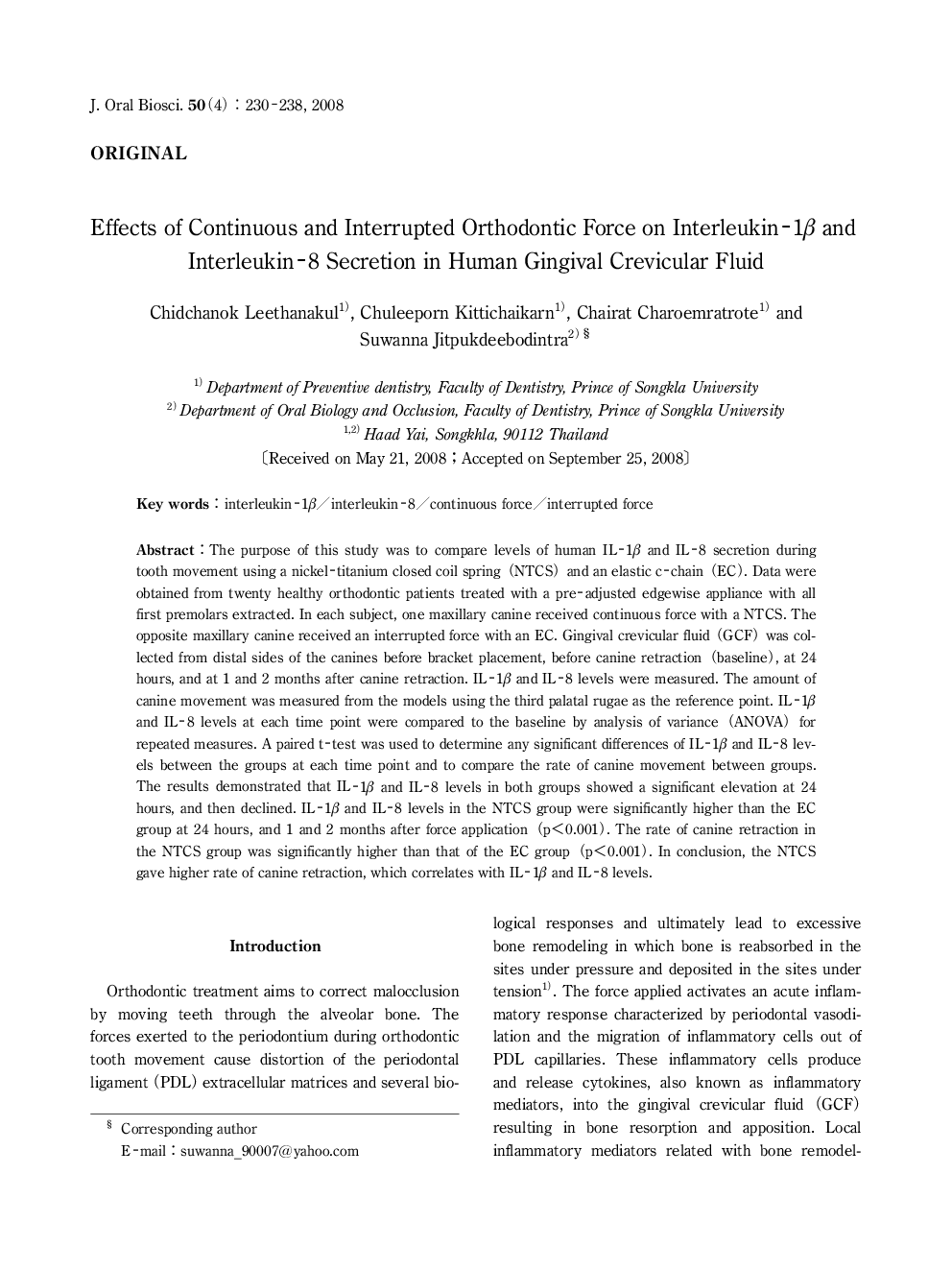| Article ID | Journal | Published Year | Pages | File Type |
|---|---|---|---|---|
| 2777030 | Journal of Oral Biosciences | 2008 | 9 Pages |
The purpose of this study was to compare levels of human IL-1β and IL-8 secretion during tooth movement using a nickel-titanium closed coil spring (NTCS) and an elastic c-chain (EC). Data were obtained from twenty healthy orthodontic patients treated with a pre-adjusted edgewise appliance with all first premolars extracted. In each subject, one maxillary canine received continuous force with a NTCS. The opposite maxillary canine received an interrupted force with an EC. Gingival crevicular fluid (GCF) was collected from distal sides of the canines before bracket placement, before canine retraction (baseline), at 24 hours, and at 1 and 2 months after canine retraction. IL-1β and IL-8 levels were measured. The amount of canine movement was measured from the models using the third palatal rugae as the reference point. IL-1β and IL-8 levels at each time point were compared to the baseline by analysis of variance (ANOVA) for repeated measures. A paired t-test was used to determine any significant differences of IL-1β and IL-8 levels between the groups at each time point and to compare the rate of canine movement between groups. The results demonstrated that IL-1β and IL-8 levels in both groups showed a significant elevation at 24 hours, and then declined. IL-1β and IL-8 levels in the NTCS group were significantly higher than the EC group at 24 hours, and 1 and 2 months after force application (p<0.001). The rate of canine retraction in the NTCS group was significantly higher than that of the EC group (p<0.001). In conclusion, the NTCS gave higher rate of canine retraction, which correlates with IL-1β and IL-8 levels.
